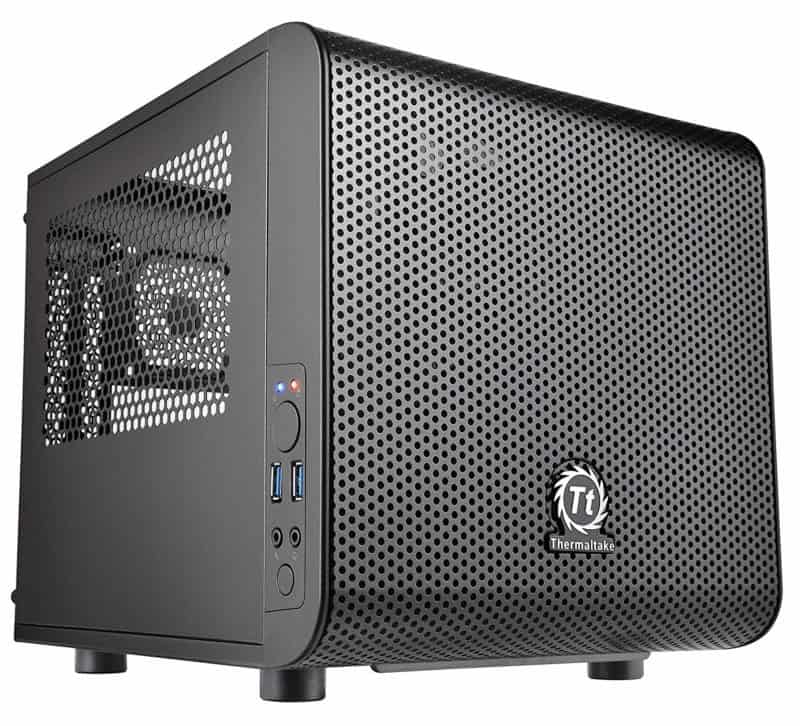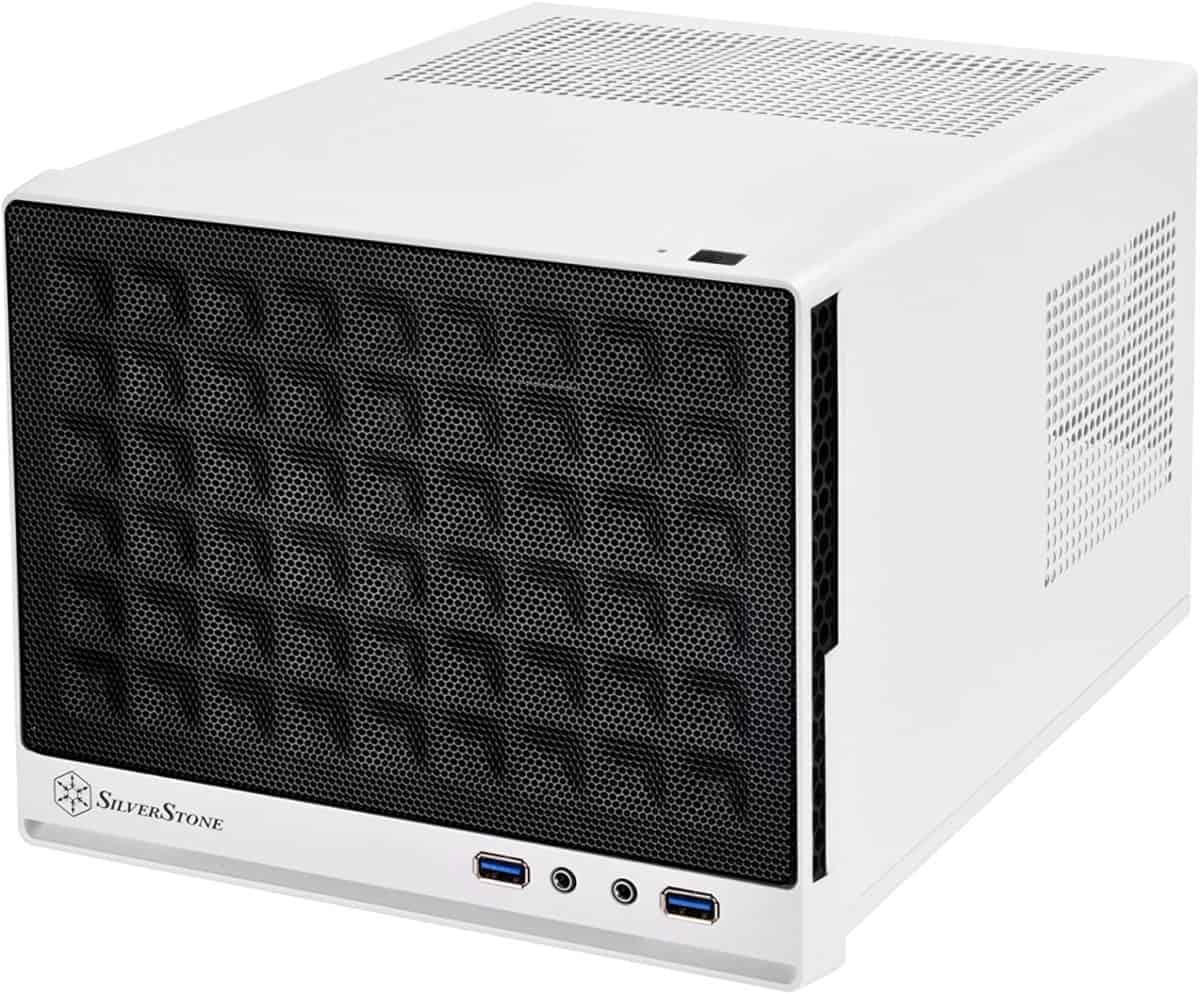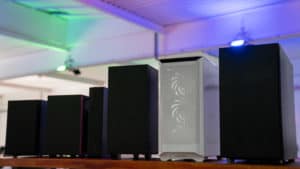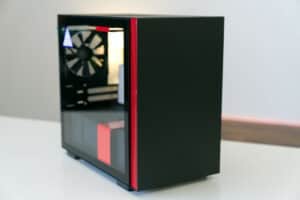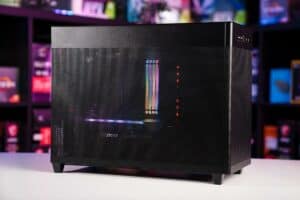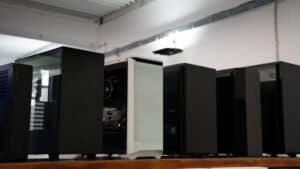Best mini ITX (MITX) cases 2024 – our top picks
We find you the best mini ITX case for your next compact build
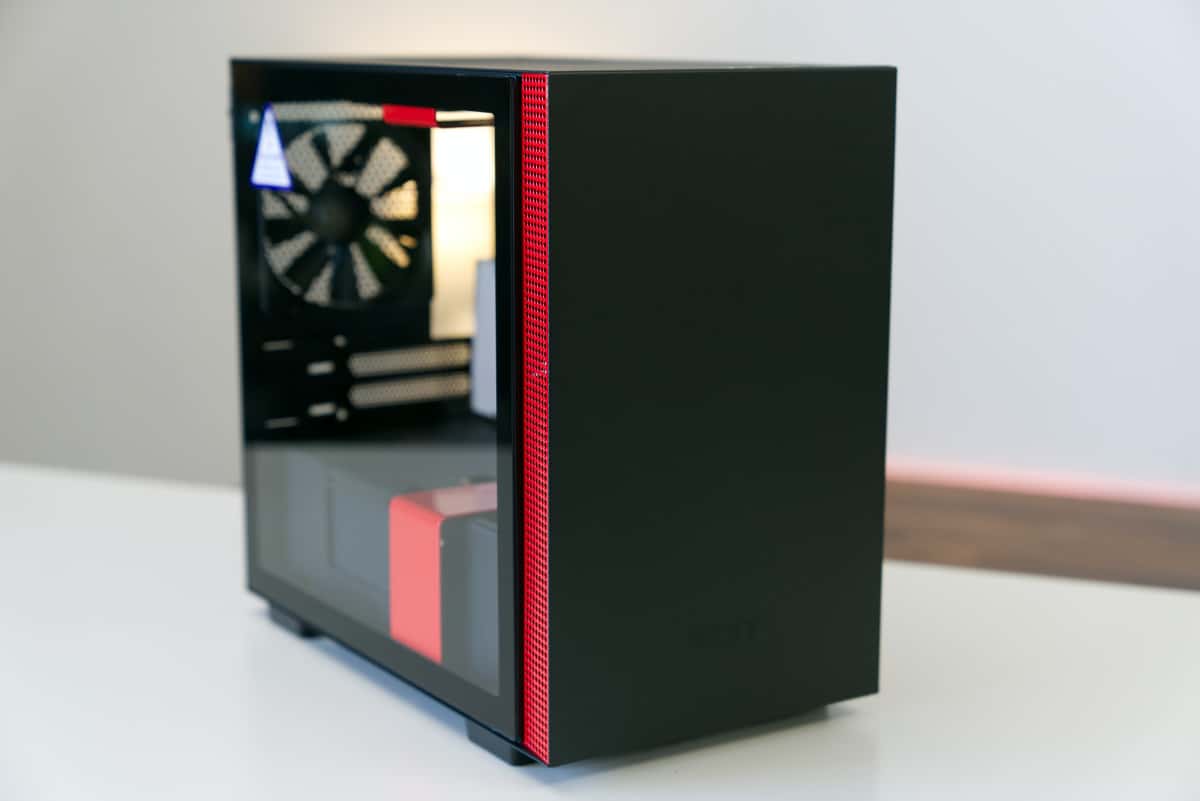
WePC is reader-supported. When you buy through links on our site, we may earn an affiliate commission. Prices subject to change. Learn more
Looking around for a small form factor build, then you want the best mini ITX case for the job. These MITX chassis allow for some very compact options for your next computer. There are plenty of options to choose from with plenty of variety and different benefits and disadvantages to each.
The popularity of Mini-ITX PC cases, mini gaming PCs, and the smaller form factor components that go with them have been gaining popularity in recent years. With the inherent risks or potential problems such as temperature performance and noise, it is important to find the best Mini-ITX case for your building needs. We keep this page updated with the latest picks, so you can find some smaller than MATX case options. For the top picks, we have the Thermaltake Core V1, Silverstone SG13WB, and the NZXT H210.
Today’s best PC case deals
- Lian Li V3000 Plus White GGF Edition Full Tower case – Save 55% NOW!
- CLX Set Gaming Desktop (AMD Ryzen 7 5700G, Radeon Vega 8) – Save 10% NOW!
- be quiet! Dark Base PRO 901 Black computer case – Save 12% NOW!
- GIGABYTE C301 PC Gaming Case – Save 10% off!
- NZXT H510 Elite Premium Mid-Tower ATX Case PC Gaming Case – Save $20
Thermaltake Core V1
Thermaltake Core V1
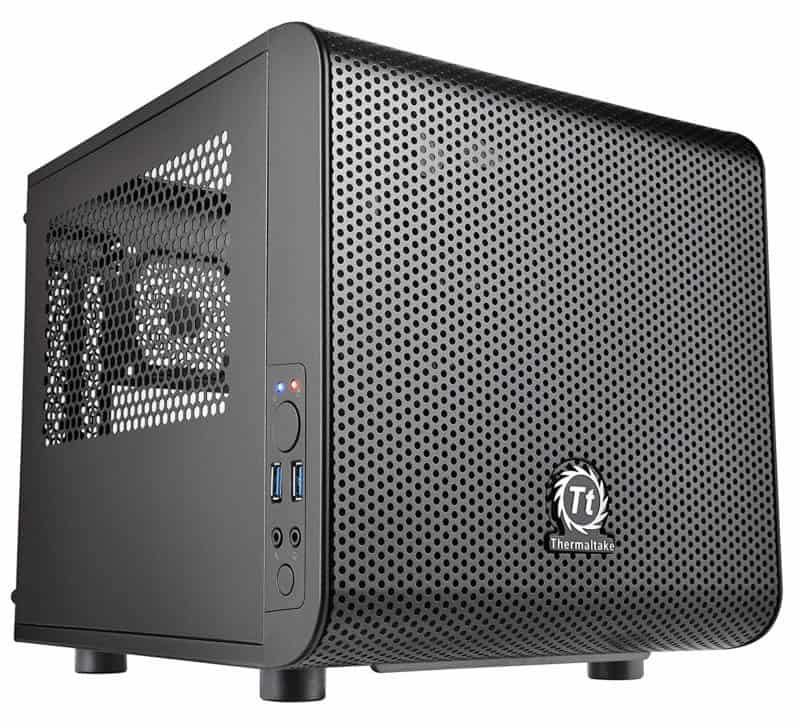
Type
Mini Tower
Motherboard Support
Mini-ITX
Dimensions (H x W x D)
276 x 260 x 316mm
Included Fans
1 x 200mm fan
- Huge fan comes included
- Compact
- Low price
- Straightforward to build in
- Budget materials
- Limited space for cables
- Limited space for AIO solution
This budget mini-ITX case from Thermaltake is functionally brilliant, especially when you consider the low price tag that comes with it. The Core V1 is actually pretty tough once it’s built-in and although airflow isn’t the best, it comes with a huge 200mm fan on the front panel to pump through that air! The fan runs at 800RPM and actually only produces around 13dBa, which is pretty quiet.
There is also space on the rear panel for an outtake fan but we think it’s best to mount your liquid CPU cooler on this if you consider getting an AIO cooler. The front panel is comprised of 2 x USB 3.0 ports with your audio jacks just below. The panel with your power button etc is located on the side which helps aid cable management as they are closer to the bottom of the case, which is where you will be running a lot of cables.
You get an acrylic window on this case to view the system from above and it’s located on the top panel which can be removed independently from the side panels. You can also interchange these panels to improve your configuration. You also get a lower ‘chamber’ underneath where your motherboard will be mounted and this gives you some extra room to hide a few cables and improves airflow around your components.
For performance, price, and versatility, the Thermaltake Core V1 is still one of the best Mini-ITX cases available. Read our full Thermaltake Core V1 review here.
Silverstone SG13WB
Silverstone SG13WB
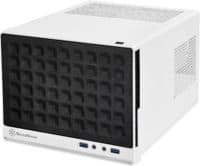
Type
Mini-ITX
Motherboard Support
Mini-dtx/Mini-ITX
Dimensions HXWXD
181 x 222 x 285mm
Included Fans
N/A
- Excellent value
- Compact design
- Quality construction
- Good cooling performance for size
- Not the best visually
The Silverstone SG13 is a bare-bones box, that is incredibly compact and offers a surprising amount of cooling performance. There is little to talk about in features and design aside from the mesh front, with uniform indentations. The outer shell is made of thin steel and hooks into place on each side.
Cable management is a little tricky due to the space limitations but I doubt Mini-ITX builders will be too concerned. You can fit an AIO inside with a 120/140mm fan, which is advised by Silverstone themselves to keep temps down. You will also want to stick to using an SFF PSU as ATX will actually partially block the right vent.
This may not be as versatile as the Thermaltake Core V1 but it is much smaller and does surprisingly well for its low price tag.
NZXT H210
NZXT H210
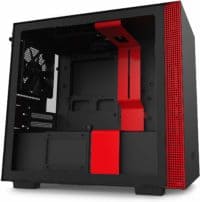
Type
Mini Tower
Motherboard Support
Mini-ITX
Dimensions (HxWxD)
349 x 210 x 372mm
Included Fans
2 x 120mm Aer F120 fans
- NZXT’s amazing aesthetics
- Good GPU thermals
- Water-cooling support
- Premium materials and build quality
- Bigger than other ITX cases
- Limited front I/O ports
The NZXT H210 PC Case may not be the best Mini-ITX or the smallest, however, it offers amazing quality for the price. The aesthetics are as pleasing as the bigger models in the H-series range and it basically looks identical to the H510, despite the size of course.
This Mini-ITX case is feature-packed and ships with two 120mm Aer fans that are pre-installed. The fans at the back and top of the casework together to provide you with a negative air pressure setup and good cooling performance out of the box. You also get a great-looking cable bar to cleverly hide cable management and give you an extra mounting point for a reservoir you want to build a water-cooled system. We also see a PSU shroud and a USB 3.1 Type-C.
This may not be as compact as the SG13, Core V1, or Node 202, but its unique size in this category earns it its place as the best “big” Mini-ITX pick. Take a look at our full NZXT H210 review.
ASUS Prime AP201
ASUS Prime AP201
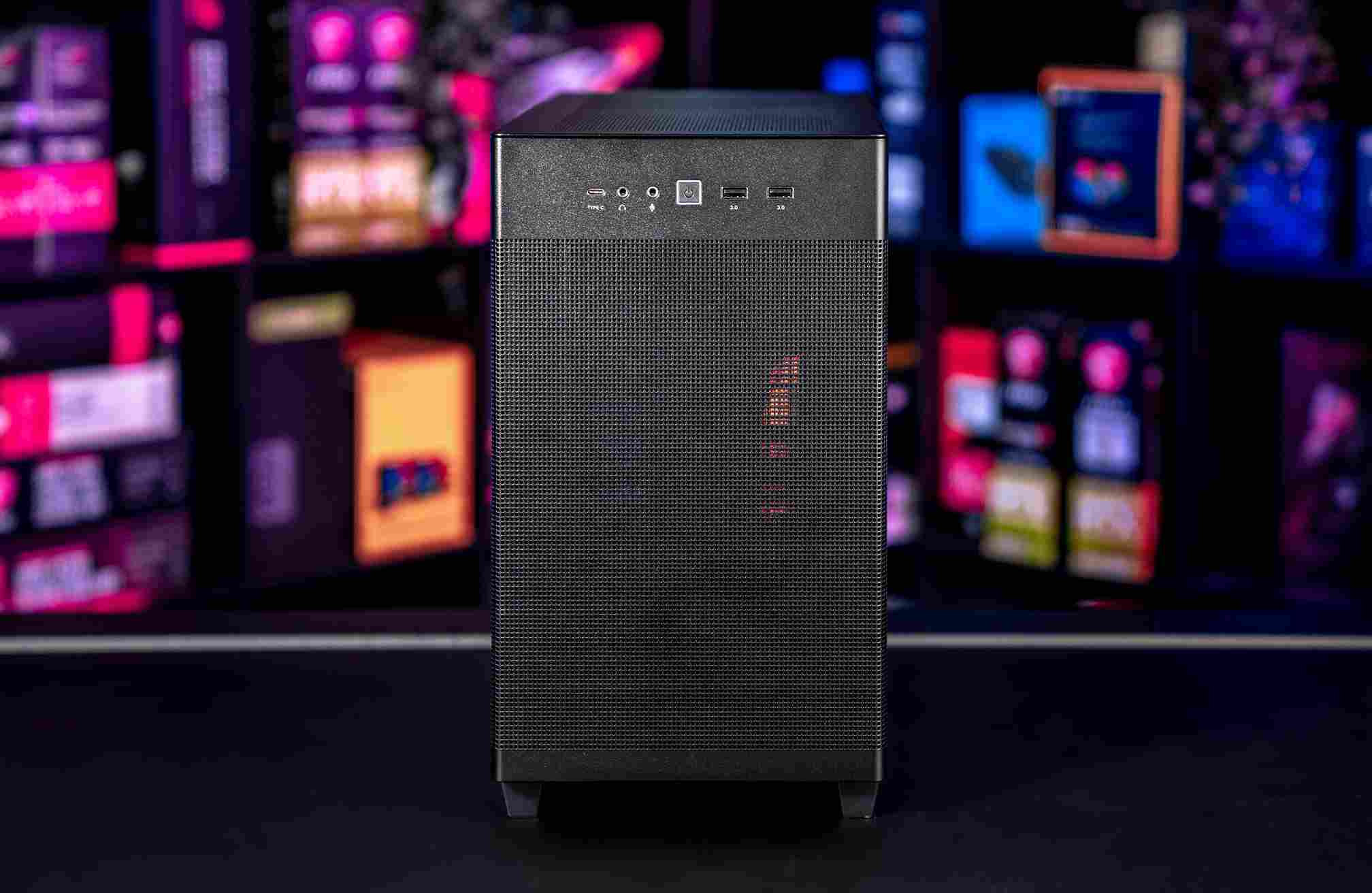
Type
Small tower
Motherboard Support
Micro-ATX, Mini-ITX
Dimensions
460 x 205 x 350 mm (LxWxH)
Included Fans
1x Prime 120mm
- Mesh design focuses on airflow
- Spacious inside offers easy building and good compatibility
- Front mounted PSU gives it good cooling possibility and unique design
- Lots of cooling expansion for such small case, even able to fit 360mm rad on top
- Well built and sturdy with high quality materials
- Only one included fan limits the amount of actual cooling provided so requires additional purchases
- Limited back space only one hidden channel
The ASUS Prime AP201 is an interesting and different PC case option that some might enjoy. With an open design, there is plenty of room for all your components. With all the mesh on the panels, there are great options for airflow. Which we do recommend adding. If not an AIO for your CPU you do want some cool air for it.
The singular back fan doesn’t quite provide enough ventilation. The passive emissions won’t cut it, especially with the GPU heating the CPU. There is some lack of cable management options at the back and it can get a bit tight otherwise there is good consideration of cable routing.
You can read our whole review of the case to learn more.
The advantages of using an ITX PC case
An ITX (Mini-ITX) PC case is a smaller form factor case that is designed for miniaturized computers. These cases are typically smaller and more compact than traditional ATX cases and can offer several benefits, including:
- Space-saving: ITX cases take up less space than larger cases, making them ideal for small apartments, dorm rooms, and other tight spaces.
- Portability: Because of their smaller size, ITX cases are more portable than larger cases and can be easily transported to LAN parties or other events.
- Low power consumption: Mini-ITX motherboards consume less power than their ATX counterparts, which can result in lower electricity bills and less heat generated by the system.
- Flexibility: ITX cases are compatible with a wide range of components, including high-end graphics cards, powerful processors, and multiple storage options, making them a versatile option for a variety of different builds.
- Customization: Some ITX cases are designed to be highly customizable and offer a wide range of features and options, such as built-in lighting, tempered glass side panels, and customizable front panels.
- Aesthetics: The compact design of ITX cases can make for a visually pleasing and unique build, which can be a nice touch for people who want their PCs to be a part of their home decor.
Cable management is necessary
Cable management is highly important but often forgotten about when you get into building a mini-ITX system because sometimes there just is no extra room to properly manage cables. Cable management is more important than ever due to the decreased airflow in your mini-ITX case, which often has fewer cooling options and space in general. So keep those cables routed properly around the system to maximize cooling performance, and keep your system happy.
Other useful pages
- Best PC cases
- Best MATX cases
- Best full tower PC cases
- Best open air PC cases
- Best PC cases under $100
- Best Mini ITX cases
Final word
The importance of a PC case cannot be overstated. Your case protects the rest of your components and provides them with airflow to ensure they’re running at a stable temperature. Due to the smaller form factor with a mini-ITX case, you may not get the best temps inside, however, you get convenience and some real space-saving solutions that look fantastic! Stuck for ideas with your next Mini-ITX build, why not check out our build recommendation?
FAQs
Does Mini-ITX have bad airflow?
Mini-ITX cases have much more limited space. Which means heat accumulates and has to be dealt with. So you have to make sure you have sufficient cooling and venting for it. As the heat will be in a more compact space, you need more fans and good airflow for it to be moved.
What is the downside of Mini-ITX?
Due to a much smaller space, heat is a bigger issue. The heat from components is much more concentrated and cramped if not dealt with. As such overall temps might increase, otherwise you may find the build throttling and perform worse off. Also, the cases tend to be more expensive as they are smaller runs and less popular so have an increased cost.

